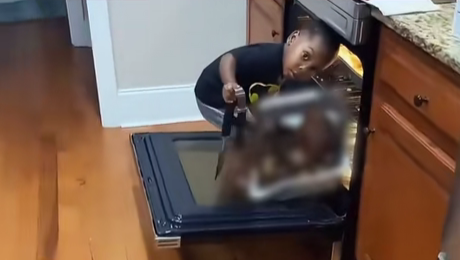The Unthinkable: A Young Child’s Act and the System’s Failure
The recent tragedy involving a young boy and his baby sister has sent shockwaves around the world, leaving communities reeling and sparking crucial conversations about child welfare and the complexities of the justice system. This heartbreaking case compels us to examine the failures that allowed such an unthinkable event to occur.
A Crime Beyond Comprehension
The Devastating Incident
Details surrounding the incident are understandably scarce, given the age of the perpetrator and the sensitivity of the situation. Authorities have confirmed that a young boy, too young to fully grasp the weight of his actions, allegedly placed his infant sister inside an oven, resulting in her death. This act, beyond comprehension for most adults, has understandably left law enforcement and the community profoundly shaken. Even seasoned officers describe the case as unlike anything they’ve ever witnessed. The boy’s identity remains protected due to his age.
Searching for Answers in the Shadows
The Urgent Need for Understanding
The case immediately raises critical questions about the underlying factors contributing to such an extreme act of violence. Child psychologists and experts in child welfare are working diligently to piece together the circumstances that led to this tragedy. Preliminary reports suggest the possibility of severe neglect, abuse, or significant psychological trauma in the boy’s life. The urgent question now is: how did the system fail to identify and address these potential warning signs before this devastating outcome? Was there a breakdown in communication or resources that prevented intervention?
A Global Call for Reform
Beyond Criminal Responsibility
This horrific incident transcends the simple confines of criminal responsibility. The international debate it has ignited centers around several critical areas. Firstly, how can we better protect vulnerable children from harm? This necessitates a comprehensive reassessment of child welfare systems and the resources available to identify and support at-risk families. Secondly, we must acknowledge the intricate link between mental health and violent behavior, even in very young children. The case underscores the need for early intervention programs and readily accessible mental health services for children and their families.
Re-evaluating Early Warning Signs
The tragedy serves as a stark reminder of the importance of recognizing and addressing early warning signs of child distress. What indicators might have pointed towards potential danger in this case? Are there gaps in our current understanding of child development and behavior that could be improved upon? A thorough investigation, extending beyond the immediate circumstances, is imperative to prevent similar tragedies in the future. This requires a collaborative effort involving social workers, educators, healthcare professionals, and law enforcement agencies.
A Heartbreaking Reality
This case is undeniably disturbing, showcasing the dark side of human behavior even in the youngest individuals. However, its true horror lies not just in the act itself, but in the systemic failures that may have allowed it to happen. It serves as a somber reminder of the complexities involved in protecting our most vulnerable children and necessitates a renewed commitment to providing better support and resources for at-risk families. Only through collective effort and a compassionate re-evaluation of our systems can we hope to prevent future tragedies of this unimaginable scale.



